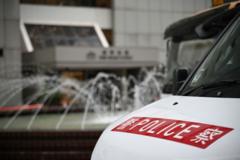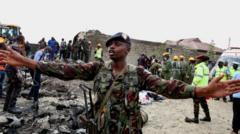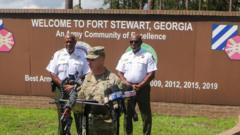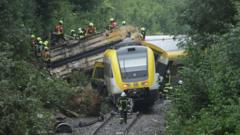Authorities in Ahmedabad are grappling with the complexities of recovering from a catastrophic plane crash that left over 200 dead, as experts warn that the risk of collapsing structures complicates the urgent search for survivors and investigative clues.
Air India Crash in Ahmedabad: Recovery Efforts Complicated by Structural Risks

Air India Crash in Ahmedabad: Recovery Efforts Complicated by Structural Risks
Emergency teams face immense challenges in stable recovery efforts following the tragic Air India crash.
Four
Teams are working tirelessly in Ahmedabad, India, following the recent tragedy when an Air India flight crashed shortly after takeoff on Thursday, resulting in the loss of more than 200 lives. Experts believe that the circumstances surrounding the crash will lengthen and complicate recovery efforts, as unstable buildings and potential gas leaks present significant risks to emergency responders.
Immediate priorities include recovering victims and searching for any possible survivors trapped in the wreckage. However, as highlighted by veteran aviation investigator Shawn Pruchnicki from Ohio State University, these operations are often labor-intensive and can take weeks to yield results. Crews must first stabilize the structures struck by the Boeing Dreamliner, particularly one building that houses a dining hall where five students lost their lives.
Survivors' chances depend heavily on the responders' ability to balance swift action with safety, as moving large debris, including the aircraft's tail, poses a threat of further structural collapse. Authorities may need to deploy cranes to remove significant wreckage and construct temporary support structures, known as cribbing, to mitigate risks while they search for signs of life or additional bodies.
Once the site is stabilized, investigators can delve into the debris for clues, including locating the aircraft's black box—vital for understanding the cause of the crash. As Boyd Group International’s Mike Boyd explains, urban plane crashes are complicated by the concentration of population and structures, leading to heightened casualties and extensive infrastructure damage.
Additionally, responders must remain vigilant about hazards such as ruptured gas lines, further complicating recovery and risk assessments. With many layers of urgency and danger, the path to recovery in Ahmedabad promises to be both arduous and critical in deciphering the circumstances surrounding this tragic event.
Teams are working tirelessly in Ahmedabad, India, following the recent tragedy when an Air India flight crashed shortly after takeoff on Thursday, resulting in the loss of more than 200 lives. Experts believe that the circumstances surrounding the crash will lengthen and complicate recovery efforts, as unstable buildings and potential gas leaks present significant risks to emergency responders.
Immediate priorities include recovering victims and searching for any possible survivors trapped in the wreckage. However, as highlighted by veteran aviation investigator Shawn Pruchnicki from Ohio State University, these operations are often labor-intensive and can take weeks to yield results. Crews must first stabilize the structures struck by the Boeing Dreamliner, particularly one building that houses a dining hall where five students lost their lives.
Survivors' chances depend heavily on the responders' ability to balance swift action with safety, as moving large debris, including the aircraft's tail, poses a threat of further structural collapse. Authorities may need to deploy cranes to remove significant wreckage and construct temporary support structures, known as cribbing, to mitigate risks while they search for signs of life or additional bodies.
Once the site is stabilized, investigators can delve into the debris for clues, including locating the aircraft's black box—vital for understanding the cause of the crash. As Boyd Group International’s Mike Boyd explains, urban plane crashes are complicated by the concentration of population and structures, leading to heightened casualties and extensive infrastructure damage.
Additionally, responders must remain vigilant about hazards such as ruptured gas lines, further complicating recovery and risk assessments. With many layers of urgency and danger, the path to recovery in Ahmedabad promises to be both arduous and critical in deciphering the circumstances surrounding this tragic event.




















